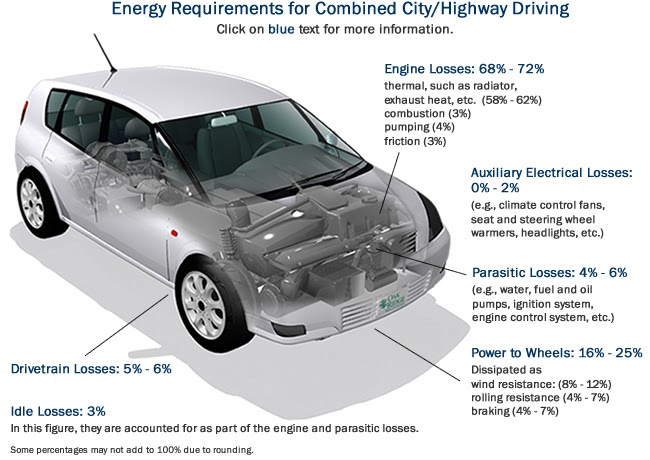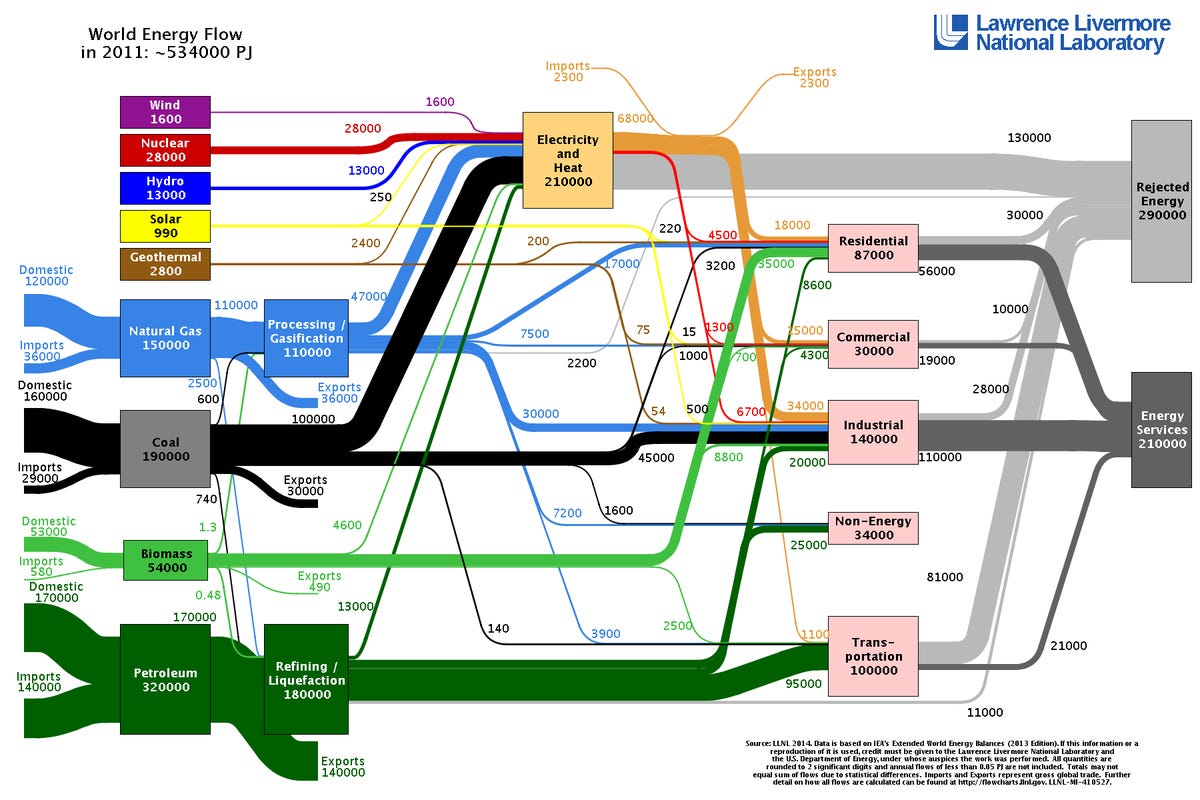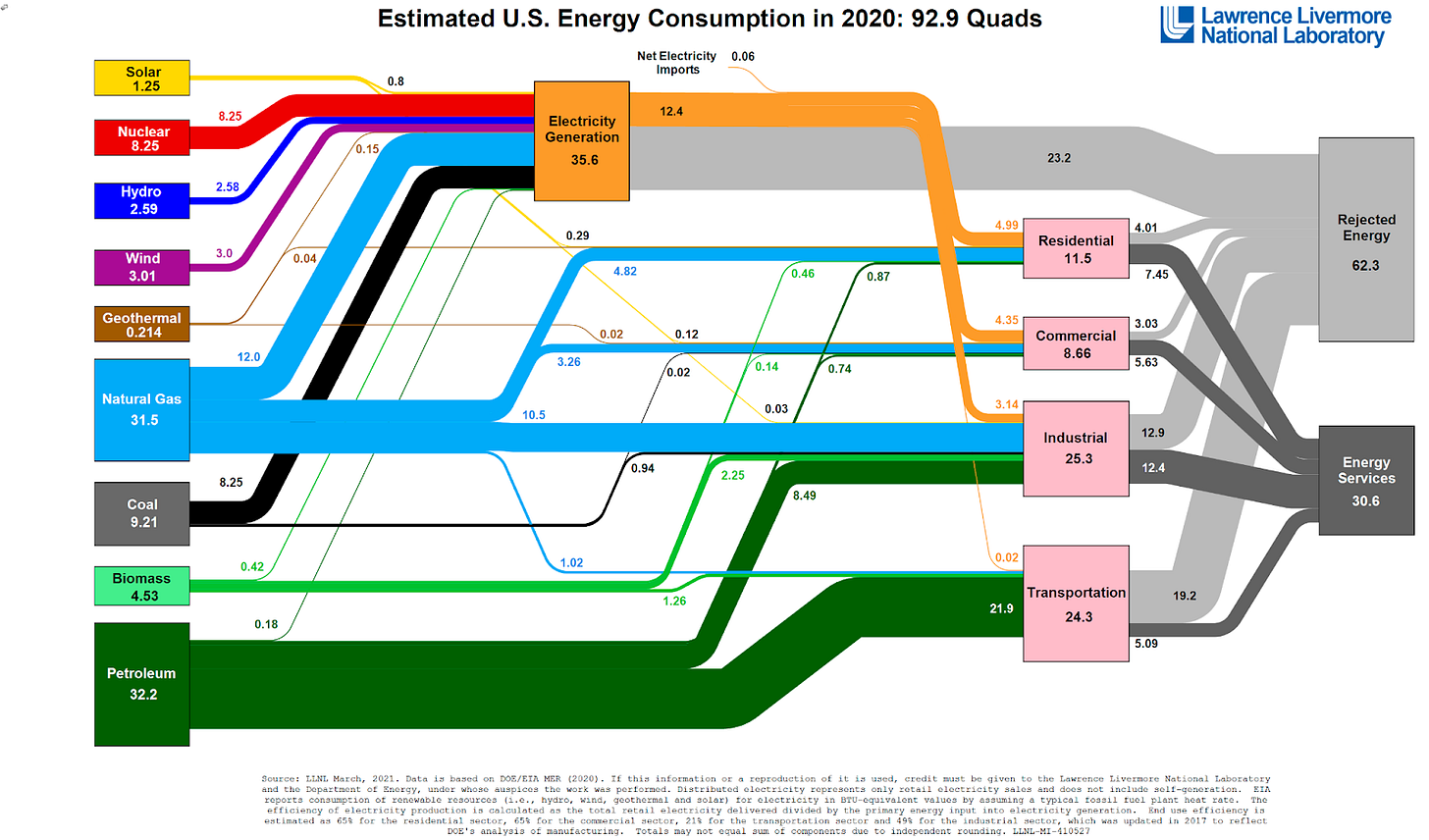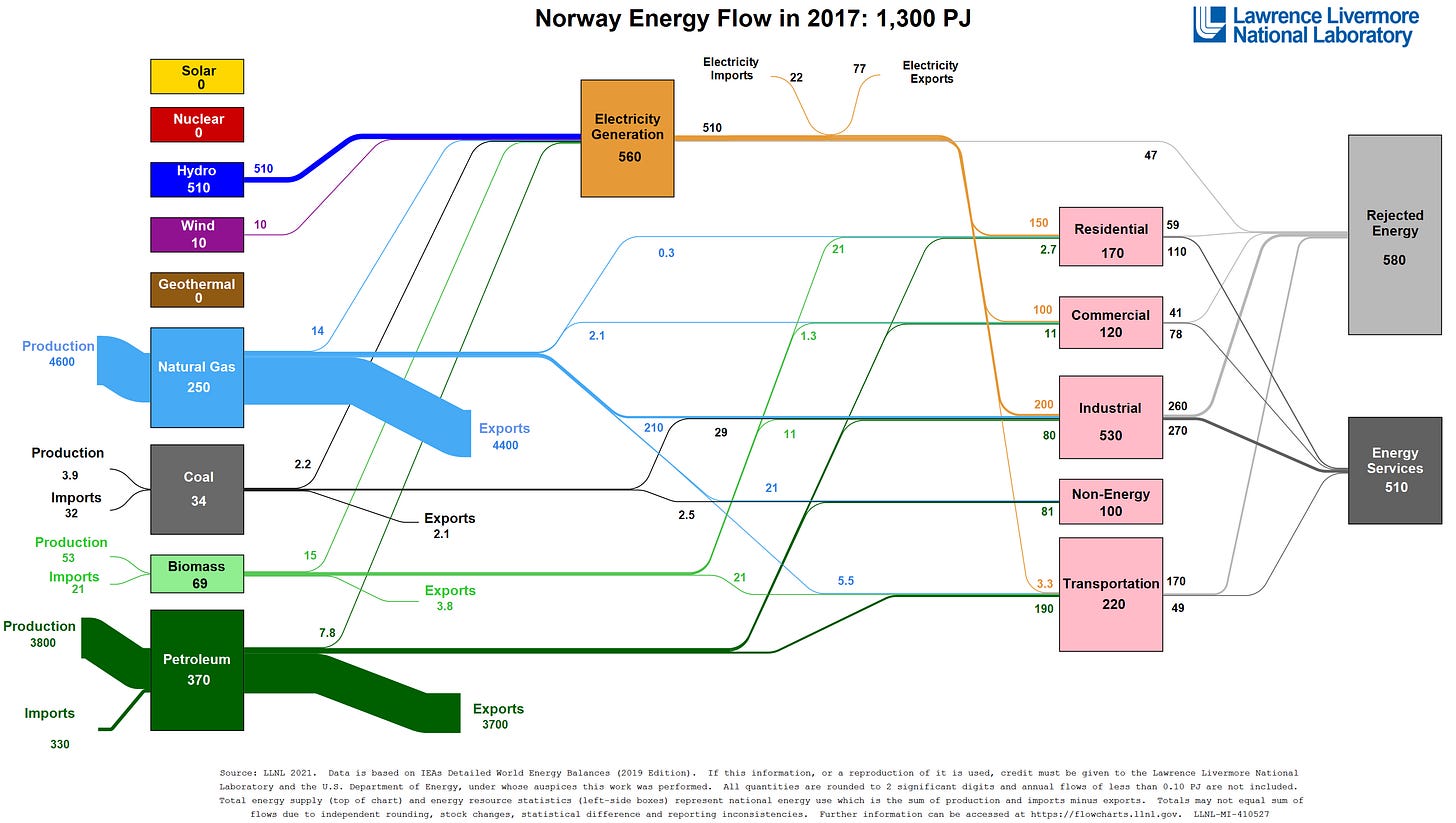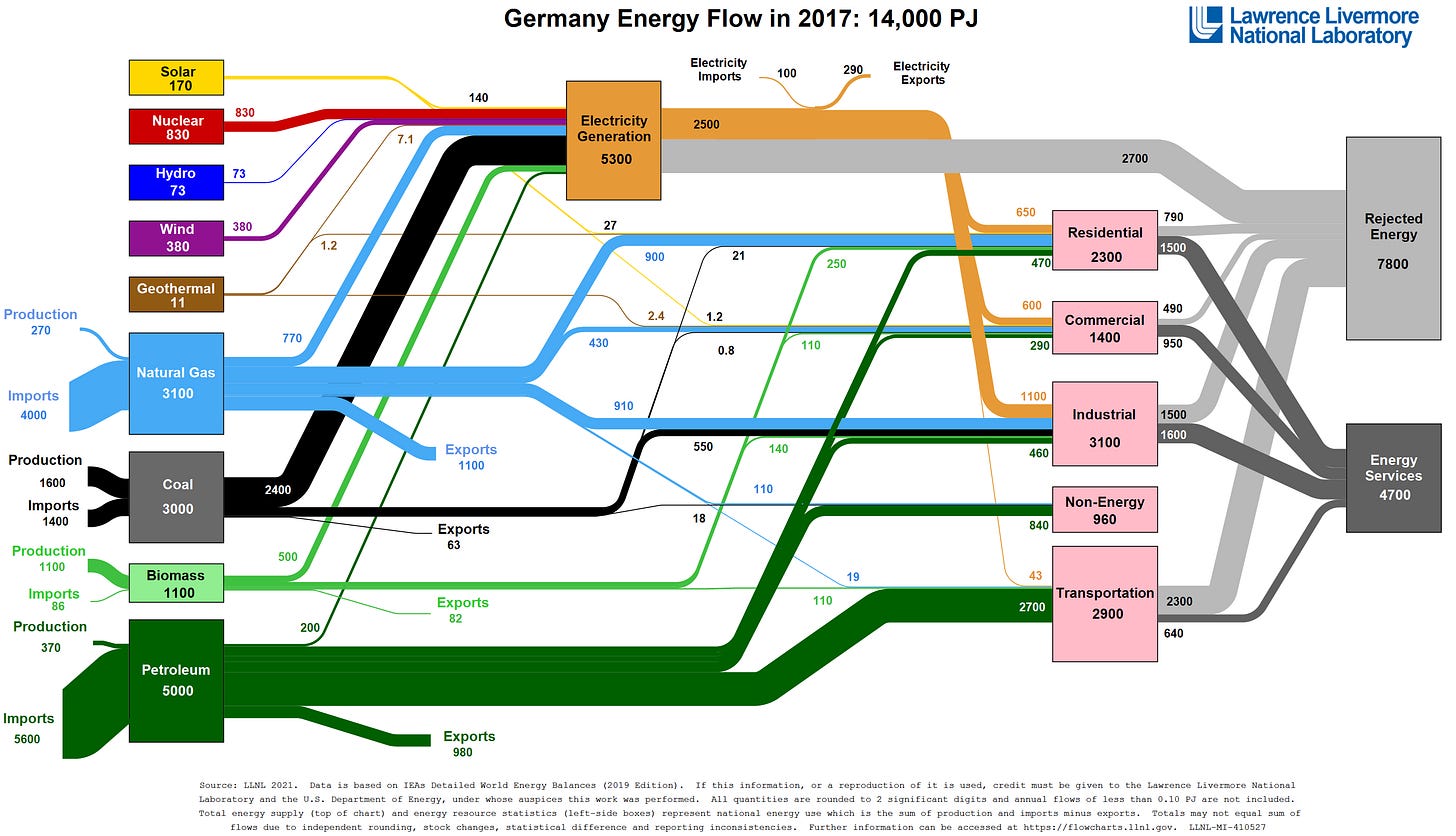It's the Efficiency, Stupid!
There is almost nothing as globally topical as climate change, and for obvious reasons. Our way of living on this blue rock—this means, the need for resources to sustain our modern lifestyles—and the rate at those needs evolve is largely incompatible with the resources available and the rate at which they regenerate.
For millions of years, our planet worked as an open system—our sole source of energy was the Sun, but as the Anthropocene kicked in, we transformed our planet into a closed system in which energy is generated on-board, by means of extracting it from various internal sources. This is a fundamental systemic change with huge thermodynamic consequences, because in a closed system the Second Law of Thermodynamics and its requirement that entropy always increases strictly applies. We progressed from an external, reliable, predictable and constant source of energy to one that is internal, unreliable, and variable. Furthermore, because energy is an integral component of the very system it is supporting, its supply is hostage to the volatility of market forces.
There’s some dose of hypocrisy around the save the planet initiative; it tends to be frivolously used with a great dose of opportunism, which in time turns it into a vapid slogan. For example, not long ago, Argentina banned the use of plastic bags in supermarkets. It was interesting to see how supermarket chains—after the ban was made effective—over-decorated their stores with green banners with legends like “we can do this for our planet”, or “let’s take care of Mother Earth, make sure you use recyclable bags”. Right, now you are the greenest corporation ever. Or, guilt-ridden millionaires suddenly investing in sustainability initiatives. According to reports, more than a quarter (27%) of high net worth individuals (HNWIs) — those with ready-to-invest assets of $1 million or more — said they were interested in sustainable products. That figure rises to 40% among ultra high net worth individuals (UHNWIs), those with $30 million or more to invest. Some investors claim they plan to allocate 41% of their portfolio to businesses actively pursuing environmental, social and corporate governance (ESG). By the end of 2021, that figure is expected to rise to 46%. Their top motivations included higher returns (39%); increased understanding of ESG products (29%); and a desire to give back to society (26%)1. I mean, this is something to celebrate, although it is hard to believe there is no opportunism at play here.
Anyway, we kind of know the core of the problem: we require more and more energy, and some by-products of this ever-increasing energetic hunger are troublesome. Why? Because such by-products rise and deposit themselves in upper layers of our atmosphere and interact with both the heat radiated from the Earth and incoming heat from the Sun, altering the natural balance which made life in our planet possible—there has always been an amount of greenhouse gases in our atmosphere without which the temperature of the Earth would be uncomfortably lower. But, too much of them becomes a problem since the temperature can rise beyond reasonable levels, breaking the delicate balance, with ugly consequences. The vast majority of anthropogenic problematic emissions come from combustion of fossil fuels, principally coal, petroleum and natural gas, with additional contributions from deforestation and other misuses of land.
Now, it is rare to see the climate change discussion framed around the way we use energy, and even rarer framed on how efficiently we use such energy. This is: the life cycle of every single Joule of energy extracted, and how we end up using it. And here is where we engineers have a relevant role, because most human-made machines requiring an input of energy will be as efficient as its design dictates it to be. Take a car as an example —whose source of power is a heat engine—the amount of fuel energy that a vehicle consumes per unit of distance (level road) depends upon:
The thermodynamic efficiency of the heat engine
Frictional losses within the drivetrain
Rolling resistance within the wheels and between the road and the wheels
Acoustic energy released due to all the car body vibrations and due to the contact with the road and through the air fluid
Non-motive subsystems powered by the engine, such as air conditioning, engine cooling, and infotainment
Aerodynamic drag from moving through air
Energy converted by frictional brakes into waste heat
Fuel consumed while the engine is not providing motion power but still running, such as while idling, minus the subsystem loads
A gasoline car is a great example of a stupidly inefficient machine: its efficiency can be between a depressing 12%-30%2—what an indecent, shitty number.
We humans require around 2,000 food calories a day to stay alive, which is equivalent to almost 100 watts, the power of an incandescent light bulb. We are extraordinarily efficient in our use of energy relative to anything human-made. Think of one of the most advanced supercomputers in the world, the Fugaku—it consumes a whopping 30MW3 (yes, megawatts) of power and still it is incapable of knowing that it is a supercomputer, incapable of understanding irony, recognize itself in the mirror, loving or having compassion. 30 Megawatts basically for doing fast computations, largely lost as heat. And all that while being equipped with 8 million of the most energy-efficient CPU cores4 in existence. It has been declared as the “greenest” supercomputer in the world5. Have to admit, I am somewhat ashamed as an engineer that we are designing and producing such inefficient artifacts and even more ashamed that we are taking pride in that. Some might say, we need such inefficient supercomputers to run the right complex analyses to find out how to make things more efficient. For how long will we have to employ inefficient means to understand how to design efficient things? We don’t have too much time.
Our distant ancestors might have been very efficient featherless bipeds, but we humans of the Anthropocene, not so much. Our modern human lifestyles cannot run on those mere 100 watts; we need way more power. When you add up all the energy an average human being on the planet uses to fuel all of the machinery, gadgets, and infrastructure integral to modern life it comes to about thirty times the rate of our natural energy requirements6. In Scale, Geoffrey West comments on this:
The rate at which we need to process energy to sustain our standard of living remained at just a few hundred watts for hundreds of thousands of years, until about ten thousand years ago when we began to form collective urban communities. This marked the beginning of the Anthropocene, in which our effective metabolic rate began its steady rise to its present level of more than 3,000 watts today. But this is just its average value taken across the entire planet. The rate at which energy is used in developed countries is incredibly higher. In the United States it is almost a factor of four larger, at a whopping 11,000 watts, which is more than one hundred times larger than its “natural” biological value. This amount of power is close to what a blue whale needs to survive. Thinking of us as an animal using thirty times more energy than we “should” given our physical size, the effective human population of the planet accordingly operates as if it were much larger than the 7.3 billion people who actually inhabit it. In a very real sense, we are operating as if our population were at least thirty times larger, equivalent to a global population in excess of 200 billion people.
Most of our “whale sized” power needs are basically right in front of us right now. Social media, computers, data centers, mobile phones, network equipment. Already, data centers use an estimated 200 terawatt hours (TWh) each year. That is more than the national energy consumption of some countries and around 1% of global electricity demand. Data centers contribute around 0.3% to overall carbon emissions, whereas the information and communications technology (ICT) ecosystem as a whole —encompassing personal digital devices, mobile-phone networks and the like— accounts for more than 2% of global emissions. That puts ICT’s carbon footprint on a par with the aviation industry’s emissions from fuel7. And yes, I am painfully aware that this article sits in one of those data centers so it actually contributes to the problem. In Spanish-speaking social media, there is this silly tendency of wishing everyone a happy day, every single day of the week, every week of every year. Millions of tweets flow around with hashtags as #BuenLunes (Happy Monday) and so on (by the way, who on Earth can have a happy Monday?). Unreliable, old sources point out each tweet takes roughly 90 Joules of energy. Reliable or not, every tweet submitted undoubtedly requires energy, because, well, nothing comes from nothing. Every time I see a #HappyMonday hashtag ranking high, I can’t help thinking of Professor Farnsworth from Futurama and his evergreen remark-gone-meme:
I Don’t Want to Live in This Planet Anymore.
So, we have inefficient cars, inefficient data centers, inefficient supercomputers, inefficient engineered machines all over the place, and billions of energy-hungry humans. What does the overall picture look like?
Sankey diagrams are very illustrative charts which depict flow sources and sinks, where the width of the arrows is proportional to the flow rate. Wouldn’t it be great to be able to visualize a Sankey diagram of worldwide energy consumption? It would, and luckily the people at the Lawrence Livermore National Laboratory have been keeping such flow charts open and available for all of us to see. See for yourself the energy consumption of the world in 2011 (unfortunately, there are no newer charts at the global scale).
LNLL has better, more updated information about the US energy sources, sinks and flows. As one of the most developed countries in the world, this can be relevant for observing how the energy hunger of a modern, overly digitalized society and economy looks like:
Here’s Norway:
And Germany (who ranked first in the The 2018 International Energy Efficiency Scorecard):
Now take a look at the right hand side of these diagrams. What do you see? Pay attention at the two gray sinks or ends of the energy flow. One is called “Energy Services”, which basically describes the final, actual use of the energy. For a car, this is energy used to move the damn thing from A to B. The other one is called “Rejected Energy”. What is rejected energy? Instead of me struggling to explain it, why don’t we let the very LNLL folks to describe it:
Now go see the graphs above again—yes, that is correct, we waste much more energy than we use. But what is waste in this context? Two things. On one hand, it means that the machines, devices and complex systems we engineer convert a shameful big portion of the energy they ingest into forms which represent no useful use. Examples? When you touch your car’s hood and it is hot, or when your 2500 euros laptop boils while it’s charging during the night while you’re sleeping, when smoke comes out of a chimney or from the myriad of car exhausts in the streets all over the world, when your washing machine vibrates like it’s ready to walk out of the house. And all the machinery used to produce all these inefficient artifacts suffering the same, and the machinery to produce the inefficient machinery as well. All that rejected energy unceremoniously dissipates back to the environment to never be seen again.
On the other hand, there is also inefficiency which is not strictly physical nor engineering originated, but behavioral. Just walk around any office district in any city around the world during night time and appreciate the amount of lighting kept on for literally nobody, except one workaholic or two. Even if those offices were equipped with theoretical perfect light bulbs—this is, 100% of the energy taken converted to visual light—they would still be used to give light to inanimate objects such as chairs and desks. I am not saying pointless office lighting is the main reason behind climate change, but it depicts in a familiar way our behavioral sloppiness. My mom used to leave a light on for our dog when we were leaving the house back when we were kids, to which my dad would say—dads will be dads—”nice, now he can get to read”.
See the aggregate problem—it includes crappy engineering, but it also exceeds it. Inefficiency also stems from our incapacity of gauging demand in real time, and the inelasticity of our behaviors and needs: as we incorporate new forms of comfort and entertainment, we are not willing to give them up due to environmental reasons.
Transportation is the inefficiency superstar in all those Sankey charts shown above. A nearly empty bus with only one passenger screams inefficiency, but it sort of makes sense when you a. understand that buses cannot predict demand—upon the slightest probability of a single passenger requiring transportation, the buses have to be kept running, and b. even if they could predict demand (as for examples airlines can), transportation has been a strong economic factor: if people can’t go to work or travel for business, the economy dies. Therefore, our economies rely on that inefficient sector—it is a necessary evil. See the graphs above—80% of the energy in transportation is wasted, in all graphs. Has the experience during the COVID-19 pandemic and the surge of remote work come to finally challenge this paradigm? Time will say.
But how come complex organisms are so clever to run on such a fraction of energy and achieve things such as consciousness, cooperation and feelings? Nature has taken millions of years to painstakingly perfect its designs and make them more efficient and fit. Organisms, including ourselves, evolved throughout myriads of generations as infinitesimal genetic changes were introduced to make their—our—survival more likely. Nature is overly patient and it aligns its rates well to the environmental rates. On the contrary, we humans live say, 80 years, and we struggle to think and plan for anything longer than a generation ahead of us, two maximum. Our rates are highly incompatible with the environmental rates. And the organizations which produce systems and products whose efficiency affect the environment run on even shorter timelines and are pushed to design and manufacture artifacts under market pressures which tend to revolve away from efficiency matters. Efficiency—as a feature—does not get people to camp outside a store.
The Way Forward
Ok, we seem to be in a messy situation, how do we get out if it? I don’t know. All I know is that systemic changes must be embraced, at ridiculous large scales. All the inefficient systems and artifacts in use today—which contribute to those awful metrics shown in the charts above—were architected in a past where efficiency was not a big concern or a concern at all. Transportation more or less is done the same way as decades or centuries ago, despite localized improvements such as fuel-efficient engines or electric vehicles. A true shift towards better technological efficiency requires holistic approaches: perfecting the vehicles, perfecting the roads, perfecting the cities, perfecting demand gauging, perfecting optimization algorithms, etc.
And last, but definitely not least, our behaviors. A 100% efficient machine can still be used inefficiently. See the Jevons paradox (sometimes seen as Jevons' effect). It occurs when technological progress increases the efficiency with which a resource is used, but the rate of consumption of that resource rises due to increasing demand, leading to an overall higher consumption than before the technological change took place. Example: you buy a dishwasher because it is more water-efficient than doing the dishes yourself, but because now you have a dishwasher, you use a lot more cutlery and dishes which in the long run accounts for a higher water and electricity consumption compared to when you didn’t have the machine. A classic one: you change an old incandescent light bulb for a low-consumption one, and now you keep the light on a longer time which ends up consuming more than the incandescent light it came to replace—all in all, this leads to an efficiency dilemma.
In summary. On one hand, energy inefficient technology—and marketed as state-of-the-art. On the other hand, energy inefficient behaviors as we use such technology. We engineers stand at both sides of the conundrum. In the middle, a lot of pointless discussions and theoretical solutions trying to solve the wrong problem. Can you see? It’s the efficiency, stupid!8
https://www.cnbc.com/2020/07/10/capgem-world-wealth-report-billionaires-invest-in-sustainability-esg.html
https://www.fueleconomy.gov/feg/atv.shtml
https://www.top500.org/system/179807/
https://www.arm.com/blogs/blueprint/fugaku-supercomputer
https://www.riken.jp/en/news_pubs/news/2019/20191118_1/index.html
Scale : the universal laws of growth, innovation, sustainability, and the pace of life in organisms, cities, economies, and companies. Geoffrey West.
https://www.nature.com/articles/d41586-018-06610-y
Before you feel insulted, I did not coin this phrase: https://en.wikipedia.org/wiki/It%27s_the_economy,_stupid


